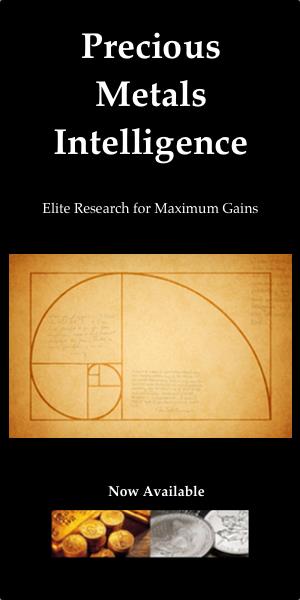Gold Prices: Watch The Correlation With Japanese Yen

There has been much discussion in the investment community regarding the strong correlation that has existed between gold prices and the Japanese yen over the last several years. Some theories which been proposed to explain the correlation include: the yen carry trade, black box algorithms, and both being considered “safety” assets by the market. The truth is that asset movements can never be explained by any single cause, because such movements are based on the individual decisions of millions of unique participants.
Yet the correlation is plain to see when we examine the charts. Below we show the Japanese yen (x100) to US dollar currency pair on top, with the price of gold in US dollars immediately below it, since the 2011 peak in precious metals prices. We have drawn long-term (magenta) trendlines, intermediate (blue) trendlines, horizontal support/resistance (black), and Fibonacci retracement levels (light silver) for both assets:
Note the tremendous similarity between the two charts. For example, both assets peaked in mid-2011. Both experienced significant percentage declines simultaneously from late-2012 through mid-2013. Both then began to stabilize in late 2015, before rallying strongly in 2016.
The correlation has indeed been quite significant – that is, until August of this year.
Gold Breaks Downtrend
Notice how in August 2017, the gold price clearly exceeded its long-term (magenta) 2011 - 2017 downtrend, whereas the Japanese yen has not yet done so. Further, gold has held above this breakout for over two months, whereas the yen still remains below its related trendline.
This is a divergence in behavior, and it is alerting us that something is beginning to shift internally in these interrelated markets.
Yen To Gold Ratio
The other way to view this relationship is not with one asset class on top of the other, but in ratio form. We are hereby examining the same assets, but with the Japanese yen expressed in gold terms:
Note that since 2011, this ratio has barely moved as a net sum, as shown by the blue callout lines. Essentially, gold and the Japanese yen have been behaving as the same asset class. An investor could have bought yen or gold, and it would not have made a material difference to his portfolio returns – because the correlation has been so strong.
Again, this is the same information shown in the first set of charts, simply expressed in ratio form.
When we zoom in on the blue callout portion of the long-term ratio chart, we can examine the changing behavior of this relationship with more precision:
Observe how the ratio is now curving downward toward the lower boundary of the correlation trendlines. What this is showing is that the gold to yen relationship still exists, but it is weakening. The evidence for this in absolute terms can be seen by gold’s breakout of its long-term downtrend (chart #1), with yen’s relative lag.
When The Levee Breaks…
It is important to consider the ramifications of what will occur in the gold market when the lower boundary of this correlation breaks. Gold and yen, which have behaved nearly identically for the past six years, will be ready to start responding to independent fundamentals. This will be a significant shift in a marketplace where investors have become used to treating the two assets as practically the same.
Should the ratio break higher through the upper (blue) correlation boundary, it would signify that yen is poised to take leadership over gold. We place the odds of this occurring as low; however, the possibility must be mentioned.
In contrast, should the correlation break lower, it would signify that gold is set to emerge as the safety asset of last resort, freed from whichever forces have held it in check with yen over recent years.
A break lower from the correlation will occur with a simultaneous surge in gold prices. Investors would be signaling their favor for gold versus yen, and this would represent a seismic shift in the marketplace.
As we can see on the last chart, such a possible breakdown in the gold to yen correlation is not far off into the future. We can presently see the ratio curving lower, again preparing to test the lower boundary. We see gold breaking its long-term downtrend as yen lags. While the break of the correlation may not occur this year, our best assessment is that we will see a definitive severing of the yen-gold relationship sometime in 2018.
Fundamentally, what could be the cause for this breaking correlation? We speculate that increased tensions with North Korea could cause Japanese investors to move assets into gold, which would have the effect of lowering the value of yen in gold terms. A sufficient movement by Japanese investors in this direction could be the spark to cause the relationship to finally sever.
Takeaway On Gold And Yen
Both gold and Japanese yen have acted as the same asset class for practical purposes since 2011. However, early signals show gold beginning to outpace yen. Investors should not underestimate the impact that a more significant breakdown in this ratio will have on gold prices. We expect a major gold advance to coincide with a break of the lower boundary of the correlation.
********





















